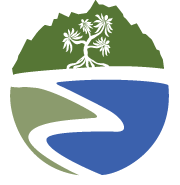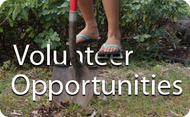|
When I think of botulism, I usually picture dented food canisters, improper food storage, and the potential for human sickness. What I didn’t realize is that there are many different strains, and one that that can be deadly to our avian friends. Botulism is a natural toxin commonly found in soils and is produced by a bacteria known as Clostridium botulinum. Type C botulism severely affects water birds in Hawai'i and can create a damaging cycle when introduced into a population. Avian botulism is present in Hawai'i year-round and can be found in wetlands across the state. It affects common waterfowl like Hawaiian coots, stilts, herons and various migratory ducks. Higher levels of bacterium can be found in hot or stagnant waters. Aquatic invertebrates, a common food source for wetland birds, spend their time feeding in contaminated soils. They are more likely to bioaccumulate this toxin in their flesh and, once consumed by wetland birds, can deliver a deadly dose of the toxin to their unsuspecting predators. Avian botulism is a paralytic disease and infected birds often have trouble walking and flying. A limp neck is a common sign of infection. Due to the paralysis of neck muscles birds are no longer capable of holding their head above water and eventually drown. Once the bird is deceased, flies will lay eggs inside of the carcass. As maggots emerge filled with the toxin, surrounding birds and animals will feast on the larvae turning this normal ecological process deadly. At this point you are hopefully thinking, “this is awful and what can be done to prevent the spread”. Many land mangers and students are working towards creating better communication channels to report the presences of avian botulism in their reserves and wetlands. Malia Staab, a graduate student at the University of Hawaii at Manoa (UH Manoa) has helped to design an educational platform, the Hawaii Waterbird Network. This is a web-based platform for managers and citizens to gather more information and report the presence of avian botulism. Other land management practices that can be utilized to combat botulism are restoring the natural flow of estuary systems and increasing circulation of still water. The public can help by reporting sick birds or carcasses, and spreading awareness of avian botulism. Please do not attempt to remove birds or carcasses from its location, as many of these birds may be rare and endangered. To submit a report or access additional education materials please visit hiwaterbirds.com hosted by UH Manoa’s Hawaii Ecology Lab.
0 Comments
Your comment will be posted after it is approved.
Leave a Reply. |
Archives
September 2022
Our MissionThe mission of Hui o Ko`olaupoko is to protect ocean health by restoring the `aina: mauka to makai. This is done in partnership with stakeholders including interested citizens, non-governmental organizations, government, educational institutions and businesses while using and focusing on sound ecological principles, community input, and cultural heritage. Categories
All
|

 RSS Feed
RSS Feed

